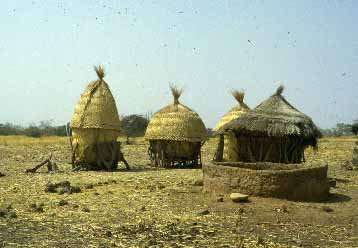 |
|
|
Shifting cultivation, swidden or slash and burn agriculture is a common means of food production in the tropics. It is well suited to nutrient poor soils in areas of low population density. The natural vegetation is cut and burned, followed by up to five seasons of growing then several years of fallow. Once the area is allowed to go fallow, another area is chosen and the process repeated. The fallow usually lasts 20 years in humid areas and as few as 10 years in dryer areas. During the fallow period soil nutrients are regenerated and given long enough fallow, the cycle can be repeated indefinitely. Burning the natural vegetation makes nutrients stored in forest biomass more available in the form of inorganic ash. These nutrients usually decline rapidly with each successive crop and weeds and pests soon invade. Thus, crops can only be grown for a few seasons. Often the area is not completely abandoned, useful perennial plants are left to mature and the area is revisited frequently to harvest banana, avocado, coffee and coconut. This system gives very high yields per unit of cultural energy input. In 1957, 200 million people farmed using shifting cultivation. In 1987 this number had risen to 300 million (Russell 1988). Unfortunately, with increasing population pressures and less available land, the fallow period has decreased. This leads to increased soil erosion and decreased species diversity. The shorter fallow associated with modern swidden agriculture makes the practice unsustainable.